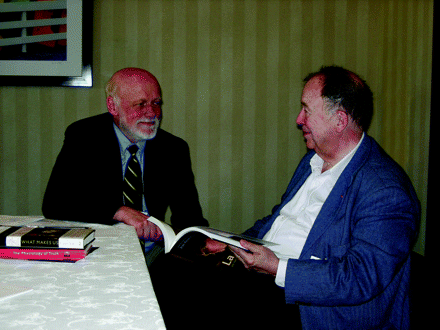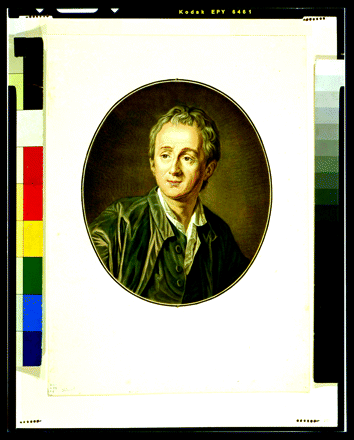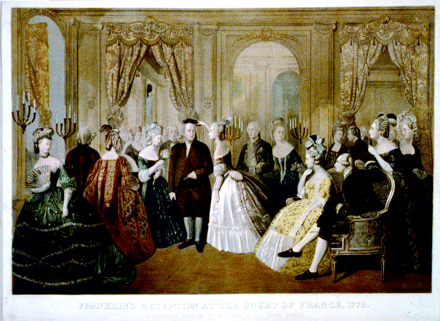Jean - Pierre Changeux: Allostery as Neuro-Enlightenment
Feedback inhibition was a new phenomenon when Jean-Pierre Changeux began his graduate studies of regulatory enzymes in bacterial extracts, and protein structure as a discipline was likewise in its infancy. But by heating his test tubes and relying on general protein reagents prior to monitoring enzyme reaction rates, Changeux found a way to relate protein function to structure in such a fundamental way that we easily take it for granted today. When Changeux first presented his experiments, at a scientific meeting at Cold Spring Harbor, his doctoral adviser, Jacques Monod, acknowledged the need for a new term to describe the implications of Changeux’s observations, and so Monod and Jacob coined the word “allostery.” Changeux’s interests in protein regulatory signals led him to study the electric organ of Electrophorus and Torpedo, from which he developed a cell-free system for studying synaptic electrophysiology and for isolating the first receptor. Changeux’s eloquence in discussing the broad implications of his work and of neuroscience in general brought him to the attention of the French government, and for several years he led his country’s official discussions of bioethics. He has a penchant for the philosophers, scientists, and artists of the Enlightenment, whose motto, “aude sapere” (i.e., dare to know), applies to Changeux’s own approach to research and teaching. The following interview was arranged by editorial board member Palmer Taylor (PT) in San Diego, where Jean-Pierre Changeux has been a Skaggs Foundation Visiting Distinguished Professor in the Skaggs School of Pharmacy & Pharmaceutical Sciences at UCSD, during 2008 and 2009 sabbatical periods. He has recently lectured on his research interests to science audiences at UCSD, the neighboring Salk Institute, and The Scripps Research Institute, and has captivated the university-wide public with his lecture on “Beauty within the Brain: Toward a Neuroscience of Esthetic Perception.” He served as Chair and Lead Speaker of the recent Center for Academic Research and Training in Anthropogeny (CARTA) Symposium on “Evolutionary Origins of Art and Aesthetics,” and has also been prominent during the past year of ASPET’s centennial celebrations. Coincidentally, the ASPET anniversary aligns with the centennial of the receptor concept, both milestones that have been marked by Changeux’s innovative thinking in pharmacology.
MI: You were still a graduate student when you began to study enzyme regulation and to think about allostery. How did you get started in your early enzyme studies and how did they lead to such a broad concept?
J-PC: At the time I came into the lab of Jacques Monod, in 1969, we were aware that certain bacterial enzymes, such as aspartate transcarbamoylase and threonine deaminase, were regulated by feedback inhibition. Both enzymes were the first enzymes of biosynthetic pathways, in which the final products of the pathway provided a metabolic signal for enzyme regulation. For my PhD work, Jacques Monod offered me the possibility of working to try to understand how these regulatory enzymes work.
MI: As an enzymologist in that laboratory, were you thinking of regulatory input solely at the level of the enzyme?
J-PC: Yes, I was thinking as an enzymologist, although the main concern of Jacob and Monod at that time was of course the regulation of synthesis and gene expression. My work was a side track to that larger concern and was not considered at that time a major subject. So, I was a little bit isolated when I started to work on enzymes. I first selected threonine deaminase, which is the first enzyme of the pathway of isoleucine biosynthesis, and I confirmed Umbarger’s observation of the feedback inhibition of the enzyme by a substance that was not the immediate product of the enzyme reaction. I wanted to understand the mechanism by which the feedback inhibitor controlled the activity of this first enzyme and to identify the kind of device that is built into the enzyme that mediates feedback inhibition. We had two main questions: Did the regulatory signal bind to the same site as the catalytic site to create steric hindrance, like a competitive inhibitor? Or did there exist another site within the enzyme, which would interact with the inhibitor and thereby control the activity of the substrate binding site? In the latter example, we thought of a protein with two heads, one for the regulatory signal and one for the catalytic site.
MI: You were looking at enzyme activity, but you were posing a structural question. What could you do at that time to determine whether there was a “regulatory site” on the enzyme distinct from the active site?
J-PC: The first experiment I did was to uncouple the effect of isoleucine on the catalytic site. I obtained an enzyme, after heating or chemical treatment, that was active on the substrate but that was no longer regulated by the feedback inhibitor, which showed that that catalytic site was separate from the regulatory site. I described the uncoupling findings as a graduate student at a Cold Spring Harbor meeting, in 1961, in a short, twenty-minute presentation, which was well received. At the end of the meeting, Jacques Monod took the opportunity, as chairman of the meeting, to mention my work and to propose a name for this kind of regulation between topographically distinct sites. His suggestion was “allosteric interaction.” At that time, Monod was much more concerned with the regulation of gene expression than in the enzyme regulation I had described, although he later on became much more interested.
MI: And you went on to describe much more than the existence of two separate sites, which developed into the Monod-Wyman-Changeux model. What were your early experiments leading to?
J-PC: My experiments were really the first evidence that enzyme regulation could arise by an indirect interaction between two sites, mediated by a conformational change. We began to speak of an “allosteric interaction.” Beyond the mechanism for feedback inhibition that I had set out to study, something else was happening with our regulatory enzymes and we were not the first to see this that the classical reaction rate-versus-substrate concentration curves were S-shaped, or sigmoidal. This S-shape indicated a cooperativity effect. So, when I looked at the properties of the uncoupled enzyme, I also found that this cooperative effect was lost. This result was also found by Gerhart and Pardee. And then came the idea that there could be a relationship between the regulation by an allosteric effector and cooperative binding. We also thought that an alteration to molecular organization of the protein might be related to the loss of cooperativity upon uncoupling. The role of my thesis work was to try to find a way to relate these phenomena, and the proposal was made along with Monod and Wyman to explain the types of protein behavior that had already been observed for hemoglobin. We knew that hemoglobin was a tetramer, with an axis of symmetry. The proposal that our allosteric enzymes were made up of a small number of subunits organized in a symmetrical manner was made, and at that time very few of these enzymes were known, and so it was an interesting idea that we were relating cooperative binding to quarternary structure.
Palmer Taylor (left) and Jean-Pierre Changeux discuss Enlightenment personalities described in Changeux’s La Lumière.... The cultural impact of Changeux’s thinking was recently explored in The New York Review of Books (1).
MI: And why was the proposed quaternary structure of your enzymes important in your model of enzyme regulation?
J-PC: Well, the proposal that these molecules are oligomers was linked to a second proposal that these oligomers may exist under discrete conformational states. As you remember, the Monod-Wyman-Changeux model proposed that the binding site would change, in one step, from the resting to the active (or “tense”) state. The oligomer transition between these two states was proposed to be symmetrical and discrete. We envisioned a kind of microcrystalline condition that distinguished the two discrete states we imagined a kind of twist in the oligomeric structure, and we formalized the resulting transition within an equation to fit the data. We could, for example, account for the loss of cooperativity and regulation in the “uncoupled” form of the enzyme.
MI: So you’re tying allostery with cooperativity?
J-PC: Yes, but I want to separate the two phenomena. There is first a very general proposal of allostery, in which two different ligand binding sites mediate a conformational change that can explain, for example, the instances of feedback regulation that we encountered. Then there is a more specialized scheme in the case of some enzymes and receptors, which is not necessarily the only mechanism to be proposed for allosteric interactions. The more specialized scheme is now going to be debated for seven-helical GPCRs. But in the case of channel receptors the nicotinic acetylcholine receptor and the glycine receptor we think that our specialized scheme applies. This scheme has also been validated by structural studies of oligomeric enzymes, in particular a l-lactate dehydrogenase from Bifidobacterium, where one can co-crystallize the two states the constrained and relaxed states. Subsequently, as a postdoc with Howard Schachman, we saw that aspartate transcarbamoylase can exist in a two-state conformational equilibrium in the absence of ligand. In this way, we experimentally distinguished a conformational state function and a ligand binding function. The opposite model, the so-called induced-fit model, was actually proposed by Koshland. In the induced-fit model, the binding of ligand causes a change of conformation within the protein, so state and binding functions are identical.
MI: But wouldn’t the induced-fit model describe cooperativity?
J-PC: In the induced-fit model you could have one subunit undergo a conformational change, then a second, a third… and such, in a sequential manner. If you want to use a metaphor, you can view this gradual or sequential change as a bit of a Lamarckian scheme where function creates the organ la fonction cree l’organe! That is, that you create the conformational change by the very binding of the ligand again only metaphorically speaking. In the MWC model, you have preexisting states, or a small number of conformations; you don’t have a molecule that is taking any kind of shape in response to a ligand. The MWC model thus views proteins more as rigid objects that exist under only a number of discrete states. To extend the metaphor, we could say that the ligand selects some of the states in a more Darwinian manner. In the case of GPCRs, the known X-ray structures derive from rigid conformations that have been deliberately constructed to avoid the allosteric transitions. With these systems, the mechanism of signal transduction has no yet been elucidated in structural terms. In the case of channel receptors, like the nicotinic receptor, these molecules appear as rather stable structures, but with discrete internal motion that reflects a twist or tilt upon opening or closing of the channel. So, I view these allosteric proteins as rather rigid objects with quite strict rules limiting their conformational possibilities I don’t see these proteins as statistical objects that take any kind of conformation.
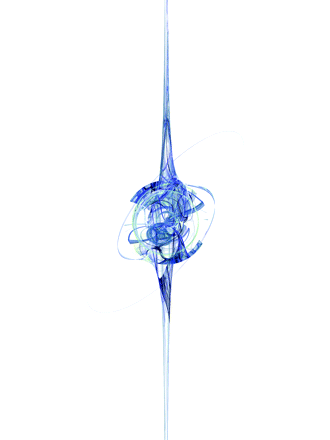
I actually view the two-state model of allostery as an elegant way of imparting flexibility into protein structure! The assembly of subunits can provide a binding site at the boundary between subunits, which can occur, as it does for the nicotinic receptor. Then you can imagine that if you have really rigid subunit subunit assembly, conformational motion will likely disrupt the boundary of subunits, allowing for opening or closing of a binding site. We didn’t have such structural information at the time that we reported our model, but what we know now form the structure of proteins indicates that the two-state model provides an elegant means for evolving a regulatory mechanism. You start with a monomer with one site, you associate it with itself, and you achieve cooperativity! You do it twice and you get hemoglobin!
MI: You were working as a graduate student in a lab known for advancing genetic regulation, but your work was fundamental to what we would now see as a separate and somewhat mathematically based discipline. How isolated were you in the Monod laboratory?
J-PC: Well I started by myself for the experimental work and the early notion of two topographically distinct sites, but then Jacques Monod, who had published his main theory on gene regulation with Jacob in 1961, became very interested in the data and its wider implications. And I think that was a very challenging moment for me because I was a very young student and Monod entered into the field and became also interested in the mathematics. And then Wyman was also visiting in the lab from time to time with his insights into hemoglobin. It was the gathering of the three minds that allowed for the depth of the theory. Regulatory proteins represented a new and unexplored topic, and then structural information was becoming possible with X-ray crystallography. We also relied on the fitting and prediction of the experimental data according to a mathematical model and enzyme kinetics. The model allowed for predictions for pharmacology and for enzymes at that time. In my PhD thesis I said in my short conclusion that these notions could apply to receptors, so it is now very exciting to see the structural model of nicotinic receptors conform, in first approximation, to the Monod-Wyman-Changeux model!
MI: So, you pursued your investigation of the MWC model with Howard Schachman, and then you made a rather dramatic change for your next position, as a postdoc with David Nachmansohn.
J-PC: Well, even when I was very young, around 19 years old, I was very much attracted by marine biology, and actually when I met Monod I wanted to work with a marine organism, but he discouraged me and steered me to bacteria. Thank goodness! But the interesting thing is that I wanted to come back to a more complex animal system, and that’s the reason why I put this notion of synaptic transmission in my thesis work. I was writing about my doctoral work in enzymology, but I was anticipating my next step. After my enzyme work, I had to complete military service, but I continued to read and think about what I wanted to do next, and I decided to move to real synaptology, which is why I went to work with David Nachmansohn to work on the electric eel. And I think that was a big chance for me because I learned how to manipulate the electrical organ to manipulate the electrical recordings. I very much had my sight on the pharmacology of the synapse. At that time, no receptor had been isolated.
PT: I think this phase of your career offers a good lesson for students today. There you were working with the luminaries of the time, but you carved out your own isolated system, taking your early expertise in enzymology to Berkley (Schachman) and then to Columbia (Nachmansohn). When you went to Nachmansohn you pursued the more complicated neurological system, applying what you had learned as an enzymologist. And then by the time you went back to France, you had this unique niche that wouldn’t have existed before. So, your early career is a perfect example of mastering an area as a student and then taking it into a new territory as a postdoc.
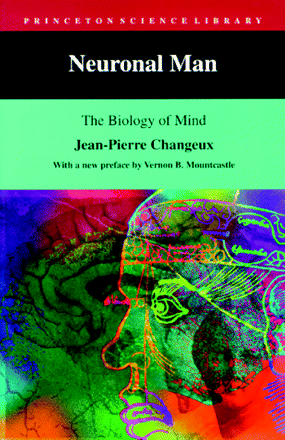
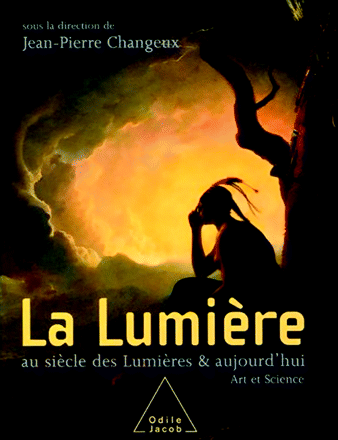
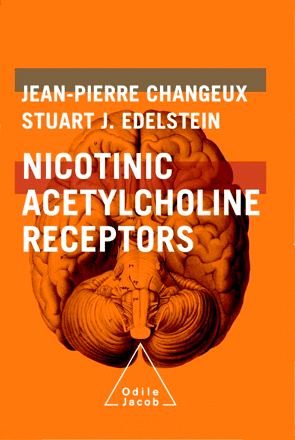
J-PC: Yes, I did not want to continue on the same system I had been studying as a grad student. I wanted to be challenged and to see if a very different system could also fit with these ideas. And going to David Nachmansohn’s lab was very challenging I must say because nobody had been able to isolate the receptors that I went to work on, then in the late 1960s. It was such an interesting experience because I had to make use of several disciplines and techniques together. I had fashioned myself as something of a biochemist, but I went into that postdoc position not to study biochemistry, but rather to enter into the pharmacology of the synapse. In that system, I could test for agonist and antagonist and noncompetitive channel blockers to understand the nicotinic receptor. I made use also of affinity labeling, but my main scope was physiology and pharmacology. And then I was able to go back to the Pasteur Institute to introduce electrophysiology and work with isolated membranes and so on. And in these membrane fragments, the responses we saw to acetylcholine provided the very strong hint that the responsive receptors underwent allosteric transitions, because there was no cellular energy source needed just membranes. This was for me an extremely important step. Previously, these receptors had been studied only with intact living cells. And then Chen-Yuan Lee, who had been working with toxins from snake venom, visited us by chance, and it was immediately clear that with his toxin we had the key to receptor characterization in our in vitro membrane system. That was an unexpected meeting of a snake venom and electric fish!
MI: What made Chen-Yuan Lee decide to visit you “by chance” in your lab?
J-PC: He had read about my work and particularly about my discussion of allostery as it might possibly relate to the receptor and also to the allosteric nature of acetylcholine esterase. The relationship between this esterase activity and the receptor was a subject of great discussion. I had made the observation by that time that gallamine was an allosteric inhibitor of the esterase, and I had discussed the possibility that this allosteric interaction could also involve the “receptor.” Chen-Yuan Lee then came to me and we saw that he had a tool that could be used in my system to address this possibility. We had everything ready in our system the live electroplaque, our acetylcholine-responsive membrane microsacs, our detergent soluble extract of these membranes. Within a few weeks, having the toxin in hand, we were able to isolate the receptor and to demonstrate that it was a molecule distinct from the esterase we soon attained the first purification of a receptor.
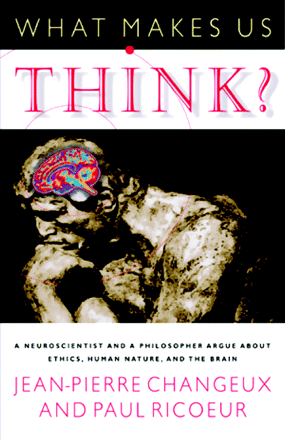

MI: So, you found your receptor having mastered electrophysiology and employing pharmacology—and then you relate receptor function to your allostery model?
J-PC: Well, to make it a short story, the receptor was isolated, and the quarternary structure was identified and the structure elucidated. We can look now at all the important studies that our laboratory and others did, and I think the results are the following: First of all, the binding site for acetylcholine and the site for the channel are quite remote, so communication between the two sites occurs by allostery. And the second aspect of the original model, namely, the prediction of the two-state model, also seems to apply in first approximation. One argument which is very strong is that the ion channel can open without acetylcholine being bound that is, without any ligand. So the opening cannot be “induced” by the ligand, and the open and closed conformations can exist in the absence of ligand. Today, people now can talk about molecular dynamics and energy states to describe conformational transitions. And some of this discussion makes mention of the Monod-Wyman-Changeux model, which is very gratifying. And now I think we are in a situation where we can challenge the model against the X-ray structure of the bacterial ligand-gated channel that is surprisingly homologous to the nicotinic receptor. So, we have made a circular trip, beginning with bacterial enzymes, working up to mammalian receptors, and returning again to a bacterial system!
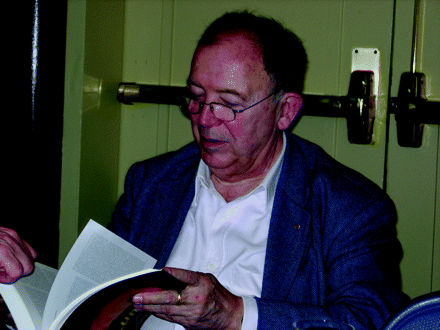
MI: But you’ve found other interests that orbit in your circular trip. Can you talk about how your neurobiological interests have expanded from molecular perspective to a more integrated point of view?
J-PC: I think there are two aspects there. First, I was elected Professor of the College de France in 1975, which required me to give courses to a very broad audience. The audience meets high standards of preparation, but from a wide variety of disciplines. And every year the lectures must address a different topic, so it’s quite a challenge for the professor. I started with of course on allosteric proteins and receptors, and because the constraints of the course are that it must progress to something new every year, I went into new domains of science. I presented the neuron, and then I moved to neural networks, and then the organization of the brain, the cortex, and the evolution of the brain. After seven years of teaching in this context, I wrote Neuronal Man, which was really the synthesis of all my teaching from seven years at the College de France. The topics of the book ranged from molecules to consciousness and culture. And some people did not like it that there was this philosophical naturalism. But I tried to deal with the neurobiological theory of higher functions: We are able to have judgment; we are able to look for truth; we are able to recognize each other and develop ethical rules; and we are also able to appreciate beauty. And I said at the end of the book that anthropology should be used as a way to extend these issues to other disciplines and establish a link between neural science and the humanities. Subsequently, I wrote The Physiology of Truth (Harvard University Press; 2004 Rockefeller University Lewis Thomas Prize for Writing about Science), which is mostly on epistemology how can the brain reach truth or look for truth? Such questions touch on ethics and art and philosophy, of course. But I must say that I never set out to pursue a purely philosophical approach. Parallel to my teaching at the College de France, our lab work with knockout mice that lacked the nicotinic receptor also touched upon higher brain functions. My foundation was still as a scientist. We pursued a whole set of studies on the relationship between the nicotinic receptor and higher brain function, such as addiction and cognition. The role of these receptors in disease also is a concrete side of the world that I have been thinking about. And of course there are many different receptors, but we also now appreciate that the nicotinic receptor can be presynaptic and control the release of other transmitters.
MI: So, as a scientist, were you comfortable when your work and thoughts were probed by people who were focusing on philosophy and ethics?
J-PC: Again, I was not interested in being purely philosophical, but these issues were just part of my teaching and my research. Somehow, my writing came to the President of the French Republic, President Mitterand, and he asked me to be Chairman of the National Advisory Committee on Bioethics in France. I was not so pleased to get to this invitation because I was very much concerned and still am by my scientific work. But it was a responsibility that I could not escape, and it was a heavy duty, lasting for six years. I tried to be open to many views, and I had a secular kind of approach to bioethical questions. France has a long tradition in this, from the time of Enlightenment, when Diderot produced L’Encyclopedie. In any case, the Committee on Bioethics was for me a very important venture to try to see how as a neuroscientists I could personally reach a state where I could elaborate some kind of common ethical rules, based on I would say, secular and thus more universal positions. And I became very concerned by all the moral philosophers, from Kant, Spinoza and others, and I tried to consider how brain networks would be able to be related to ethics. I would say I was concerned with what is now called “neuroethics.” The Committee tried to understand the notions of sympathy and empathy. And then I wanted to challenge these ideas against somebody competent, and I got in touch with Paul Ricoeur, who was recognized not only in France but worldwide as a most distinguished moral philosopher. We wrote and argued together in What Makes Us Think? And I would say we disagreed about the brain but we agreed about ethics. It is the most astonishing conclusion of the book, which I hope represents my approach to ethics that the reader should see disparate sides of the issues and feel free to make his own decisions about them.
MI: And your writing about esthetics—is that also related to your interest in bioethics?
J-PC: Well, that is also a product of my teaching at the College of France. But at the end of What Makes Us Think? I talked about art as a way to reconcile people. For all my life, I have been collecting paintings, particularly historical and religious paintings of the seventeenth and eighteenth centuries. I have always done this for pleasure, but as I was teaching I also wondered if one could consider how the brain contemplates and contributes to art and creativity. This eventually led to an exhibition I put together a few years ago in Nancy, in the East of France, and the aim was to show how the science of Newton on the properties of light and on the universe, the theory of gravitation and so forth how this basic view on science has inspired philosophers, like Voltaire and Diderot in France, and led to philosophical reflections about man in the universe. Diderot’s famous “Letter on the Blind for the Use of Those Who See,” I think, is a great and provocative thesis against intelligent design very relevant today. There was a whole section in this exhibition on the “Letter on the Blind,” and the exhibition resulted in my book La Lumiere au siecle des Lumieres et aujourd’hui, in which I took as a problem the combination of art and science and their relationship. This is something of a tradition in France. And I am also faithful to the spirit of the American Revolution I try to present the genius of Benjamin Franklin, a great scientist and also an important voice of ethics during the War of Independence. But remember that Franklin was first a scientist! So, you see La Lumiere is in the spirit of the real America. This exhibition was set up to show how science had inspired philosophy and how philosophy lent to the discovery of other worlds. This sort of reciprocal relationship remains important, and I think should be re-actualized.

